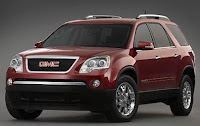
Mustang has a long history of growing (and surviving) through a variety of incarnations, some good, and some rather bad. Its rejuvenation came with its current design which hit the streets as a 2005. That Mustang’s retro features reflected 1968 when Mustang was at its best, but updated it with current technology. Now the next generation is ready for its launch in the spring of 2009.
Take a look and see what you think. While the 2005 demanded attention, this one continues the legacy in a more polished manner. I have not seen one in person, but the pictures show that the Ford designers were interested in refinement. Exterior edges are now rounded. Curves are everywhere; from the wheel wells, to the hood and grill, to the new tapered tail lights whose turn signals illuminate progressively (remember the Thunderbird of the mid-1960s?).
 The Mustang still shows aggressive styling, but it feels softer. Ford did not ruin the fine design achievement of the 2005, it just looks different now.
The Mustang still shows aggressive styling, but it feels softer. Ford did not ruin the fine design achievement of the 2005, it just looks different now.From a first impression, the car appears to be basically the same. Look deeper, and you do find changes. Ford claims that every exterior panel is new, aside from the roof. While the 2010 is now a few pounds heavier on both the GT and V6 models, performance does not suffer as the GT adds 15 hp to 315 hp, and torque increases from 320 lb/ft. to 325 lb/ft. The GT’s power comes from its tried and true 24 valve, SOHC 4.6 liter V8. The V6 continues with its reliable 4 liter at 210 hp.
Beyond its visual stance, this 2010 Mustang improves itself in variety of areas. Ford says that it has reduced squeaks and rattles by 33%, decreased wind noise by 12%, and has decreased the wind drag by 4% for the V6, 7% for the GT. While there are new wheel sizes and tire choices available, the major accomplishment seems to come with the new interior.
The 2005 Mustang looked great from the outside, but the inside was a different story. There were too many glaring surfaces and too much cheap plastic.
 Ford heard the feedback and has revamped the interior significantly. The interior is now much less harsh, with quality materials and no annoying reflections.
Ford heard the feedback and has revamped the interior significantly. The interior is now much less harsh, with quality materials and no annoying reflections. Ford’s redesign of the Mustang comes just in time, as it now faces competition. Amongst much fanfare, the Dodge Challenger is now on the street, and the Chevy Camaro is soon to follow. With refined edges, more horsepower (on the GT), and its much improved interior, Mustang continues to live on as the others just hit the ground. Now, with gas prices plummeting, the muscle car is back, and is hopefully here to stay.
LINKS OF INTEREST:
Stills:
http://www.autoblog.com/photos/2010-ford-mustang-live-unveiling/1168351/
Video:
http://www.fordvehicles.com/the2010mustang/index.asp
http://www.edmunds.com/insideline/do/Features/articleId=134729









































 There is now a Web site designed to find that lost love that got away or at least for the car.
There is now a Web site designed to find that lost love that got away or at least for the car. Unfortunately, my auto heritage does not quite live up to the romance of the cars in American Graffiti or Steve McQueen’s Mustang in Bullitt.
Unfortunately, my auto heritage does not quite live up to the romance of the cars in American Graffiti or Steve McQueen’s Mustang in Bullitt.


